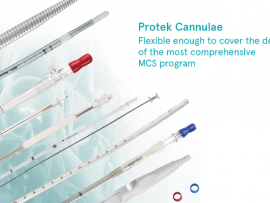Abstract Rapid hemodynamic stabilization and restoration of pulmonary perfusion are the cornerstones of treatment for high-risk pulmonary embolism (PE). While all current guidelines recommend systemic thrombolysis (SYS) as the first-line..
Read MoreAbstract In massive pulmonary embolism (PE), endovascular therapies and extracorporeal membrane oxygenation (ECMO) are increasingly utilised. However, the impact of combining endovascular therapies with ECMO on shock resolution and clinical recovery remains..
Read MoreAbstract Background The optimal pulmonary revascularisation strategy in high-risk pulmonary embolism (PE) requiring implantation of extracorporeal membrane oxygenation (ECMO) remains controversial. Methods We conducted a systematic review and meta-analysis of..
Read MoreAbstract Background and Objectives: The majority of cardiac surgical procedures are performed using cardiopulmonary bypass and cardioplegia-induced cardiac arrest. Cardiac arrest and reperfusion may lead to ischemia-reperfusion injury of the..
Read MoreAbstract Background Cardiac arrest is associated with high mortality rates and severe neurological impairments. One of the underlying mechanisms is global ischemia-reperfusion injury of the body, particularly the brain. Strategies..
Read MoreAbstract Background To explore impact of various periods of ischemia and reperfusion on the severity of myocardial injury. Methods Langendorff model of isolated cardiac perfusion system was established in 56..
Read MoreAbstract Acute limb ischemia is a rare but potentially devastating event in a critically ill patient. In the pediatric population, limb ischemia is usually related to iatrogenic vascular damage and..
Read MoreAbstract Background: Magnesium is often used to supplement cardioplegic solutions during cardiopulmonary bypass due to its cardioprotective effect during ischemia and reperfusion. The aim of this meta-analysis was to evaluate the..
Read MoreThese quotes hint that the future of any specialty lies in adaptation to change. Cardiothoracic anesthesiologists will certainly experience, and preferably effect, change in the health care system in the..
Read More








